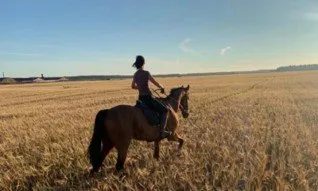Itinerary
- Saqqara (Sakkara) Pyramids: Saqqara contains the oldest complete stone building complex known in history, the Pyramid of Djoser, built during the Third Dynasty. Another sixteen Egyptian kings built pyramids at Saqqara, which are now in various states of preservation. High officials added private funeral monuments to this necropolis during the entire Pharaonic period. It remained an important complex for non-royal burials and cult ceremonies for more than 3000 years, well into Ptolemaic and Roman times.
North of the Saqqara site lies the Abusir pyramid complex, and to its south lies the Dahshur pyramid complex, and together with the Giza Pyramid complex to the far north comprise the Pyramid Fields of Memphis, or the Memphite Necropolis, which was designated as a World Heritage Site by UNESCO in 1979. - Pyramids of Dahshour: The Dahshur pyramids were an extremely important learning experience for the Egyptians. It provided them with the knowledge and know-how to transition from step-sided pyramids to smooth-sided pyramids.
The first of the Dahshur pyramids was the Bent Pyramid (2613–2589 BC), built under the rule of King Sneferu. The Bent Pyramid was the first attempt at building a smooth sided pyramid, but proved to be an unsuccessful build due to the miscalculations made on the structural weight that was being placed onto the soft ground (sand, gravel, and clay), which had a tendency to subside.
Realizing his shortcomings and learning from his mistakes, King Sneferu ordered the building of the second pyramid of Dahshur, the Red Pyramid. Once completed, the pyramid was considered to be a success, as it was a fully constructed, smooth sided, and a free standing pyramid rising to a height of 341 feet (104 meters), with an angle of 43 degrees. - Mit Rahina Museum: Memphis or Men-nefer was the ancient capital of Inebu-hedj, the first nome of Lower Egypt that was known as mḥw ("north"). Its ruins are located in the vicinity of the present-day village of Mit Rahina in markaz (county) Badrashin, Giza, Egypt. This modern name is probably derived from the late Ancient Egyptian name for Memphis mjt-rhnt meaning "Road of the Ram-Headed Sphinxes".
Along with the pyramid fields that stretch on a desert plateau for more than 30 kilometres (19 mi) on its west including the famous Pyramids of Giza, they have been listed as the World Heritage Site Memphis and its Necropolis.The site is open to the public as an open-air museum.
Includes
- Entrance fees for all the mentioned sites
- Bottled water
- A professional Tour Guide and Egyptologist
- All taxes and service charge
- Air conditioned private transportation
- Tipping
- Extra charge for the hotels far from the centre of Cairo like the 6 of October and the New Cairo
Details
Saqqara contains the oldest complete stone building complex known in history, the Pyramid of Djoser, built during the Third Dynasty. Another sixteen Egyptian kings built pyramids at Saqqara, which are now in various states of preservation. It remained an important complex for non-royal burials and cult ceremonies for more than 3000 years, well into Ptolemaic and Roman times.
The Dahshur pyramids were an extremely important learning experience for the Egyptians. It provided them with the knowledge and know-how to transition from step-sided pyramids to smooth-sided pyramids.
The first of the Dahshur pyramids was the Bent Pyramid (2613–2589 BC), built under the rule of King Sneferu. King Sneferu ordered the building of the second pyramid of Dahshur, the Red Pyramid.
Memphis or Men-nefer was the ancient capital of Inebu-hedj, the first nome of Lower Egypt that was known as mḥw ("north"). It is an open museum now contains the statue of Ramses the second and the Sphinx of Memphis.
The Dahshur pyramids were an extremely important learning experience for the Egyptians. It provided them with the knowledge and know-how to transition from step-sided pyramids to smooth-sided pyramids.
The first of the Dahshur pyramids was the Bent Pyramid (2613–2589 BC), built under the rule of King Sneferu. King Sneferu ordered the building of the second pyramid of Dahshur, the Red Pyramid.
Memphis or Men-nefer was the ancient capital of Inebu-hedj, the first nome of Lower Egypt that was known as mḥw ("north"). It is an open museum now contains the statue of Ramses the second and the Sphinx of Memphis.
Know Before You Go
- Wheelchair accessible
- Infants and small children can ride in a pram or stroller
- Infants are required to sit on an adult’s lap
- Transportation options are wheelchair accessible
- All areas and surfaces are wheelchair accessible
- Suitable for all physical fitness levels












